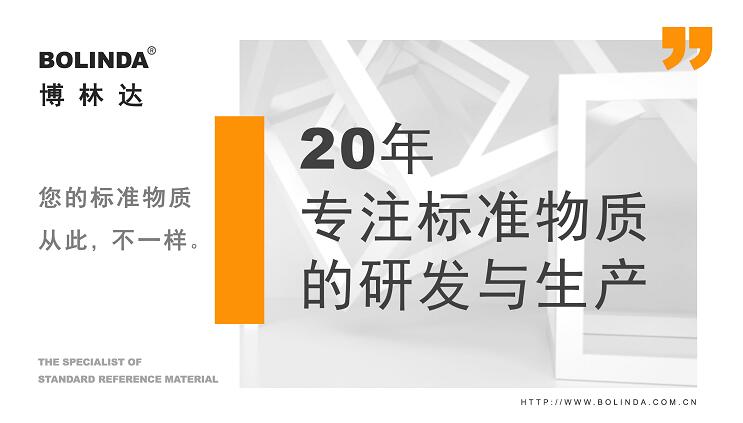2020-04-20 11:40:18
Currently, chemical measurements account for more than half of all measurements worldwide, and each chemical measurement is usually compared with its corresponding chemical measurement standard to obtain reliable measurement results, which mainly refers to reference substances. The following is a small edition of Bolinda to introduce you to the wide application of standard substances in various aspects of social development.
The standard material is a measuring standard with accurate, uniform and stable characteristic value, which has the function of maintaining characteristic value in time and transmitting quantity value in space. By using the standard material, the actual measurement results can be traceable. By calibrating the measuring instrument, evaluating the measuring process, ensuring the consistency and comparability of the measuring results, so as to achieve the unity of the quantity value.
Theoretically, if the property value of one part of a substance (unit) is not significantly different from the property value of another part (unit), then that property of the substance is uniform. However, completely uniform material does not exist, the matter and the unit of the question more or less there will be non-uniformity, in the storage process, will also occur chromatography, segregation, aggregation and other non-uniform tendency, therefore, uniform is relative, and non-uniform is.

The property of a substance can be considered "uniform" if the difference between the property value of one part (unit) and that of another part (unit) cannot be detected experimentally, or if the difference detected is small and negligible in relation to measurement accuracy requirements. Homogeneity is "a state having the same structure or composition in relation to one or more properties of a substance".
Because of the special function and use of the standard material, it has a high requirement for its uniformity. However, whether there is a difference in the quantity of properties between different parts of a substance must be determined by experimental methods. Therefore, the so-called uniformity refers to the quantity of properties between the parts of a substance that cannot be "accurately" detected by experimental methods.
It is used to calibrate the melting (phase change) heat temperature and melting heat parameters of the thermal analyzer, evaluate the thermal analysis method and measure quality control in the thermal analysis of materials. Thermal analysis standard material is a measurement standard with accurate quantitative value, which has been widely used in the fields of chemical measurement, biological measurement, engineering measurement and physical measurement. As a measurement standard with accurate quantitative value, standard material is an important part of stoichiometry and an important means of quantitative value transmission and traceability, and is widely used in all aspects of national economy and social development.
The above content is the introduction of standard substances widely used in all aspects of social development, especially in food safety, environmental monitoring and other areas of increasing concern, standard substances are playing an important role. Therefore, in today's standard substances are widely used in various fields, more and more units have joined the development and production of standard substances





